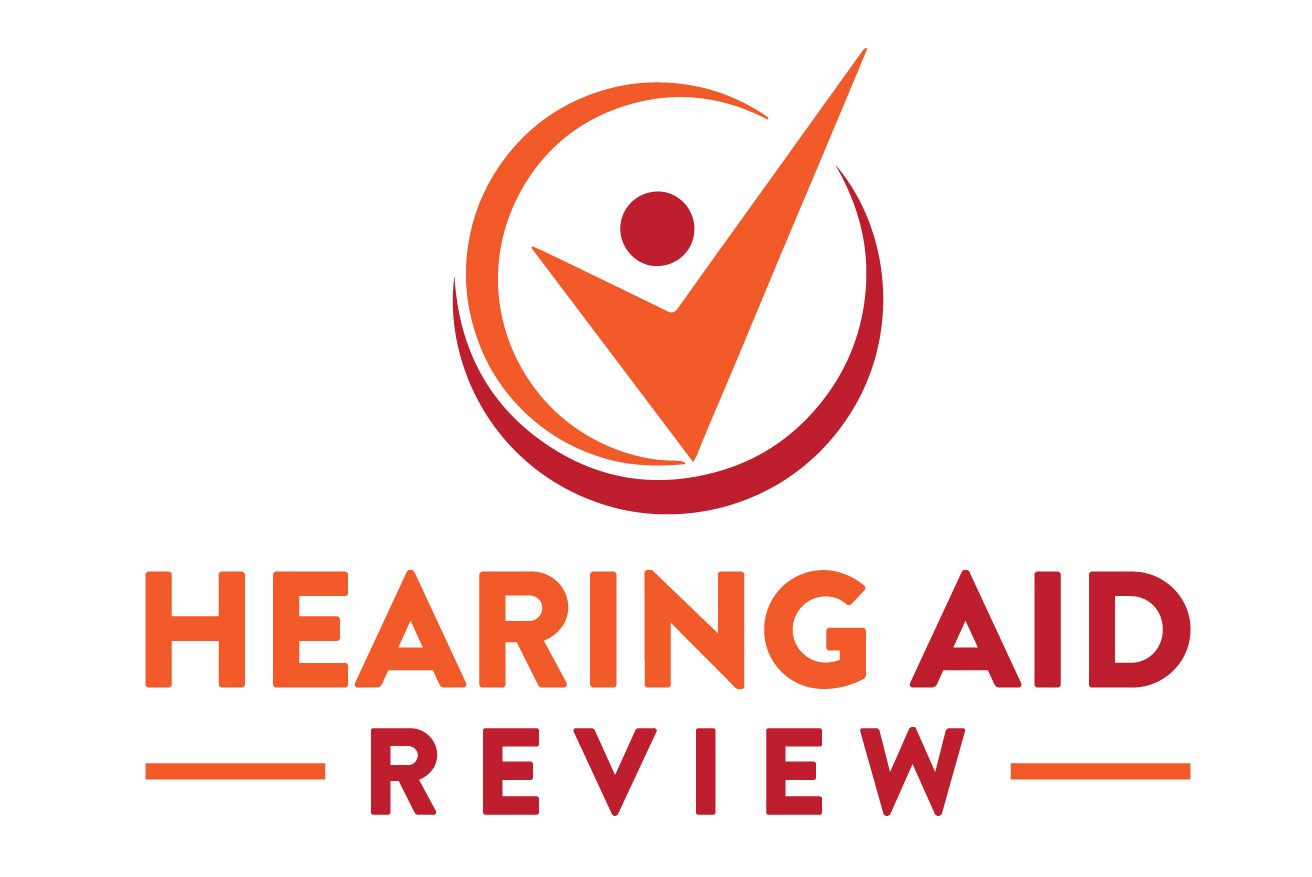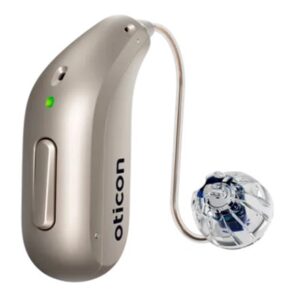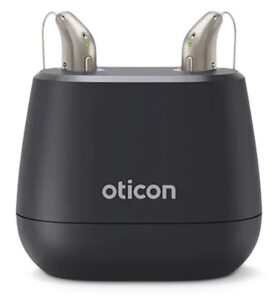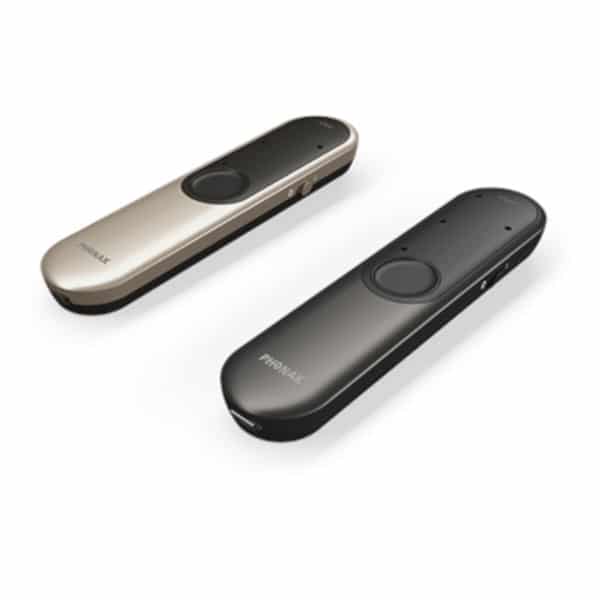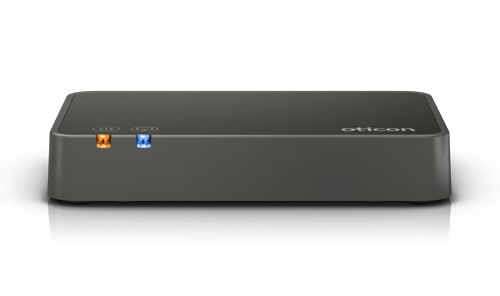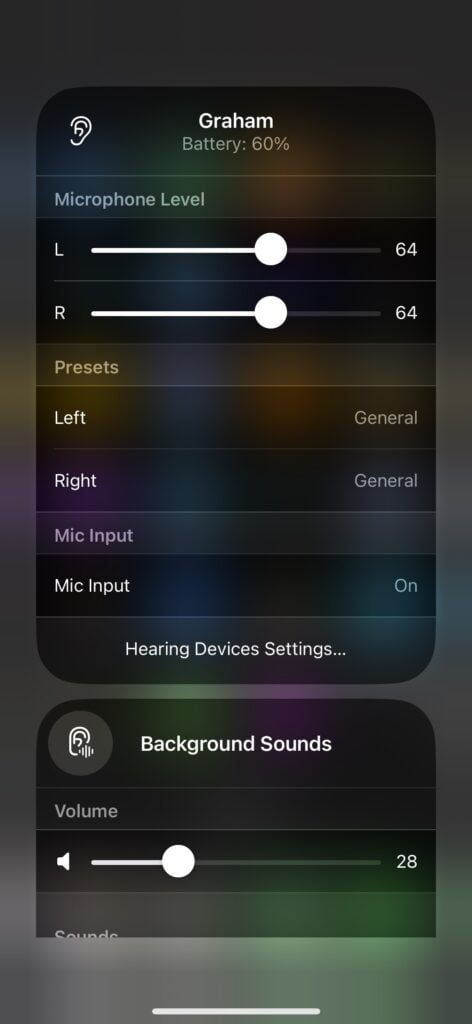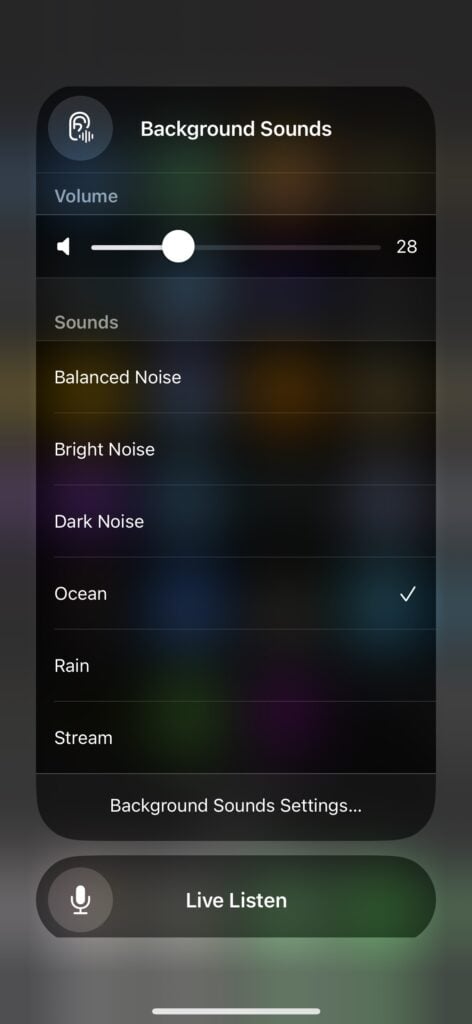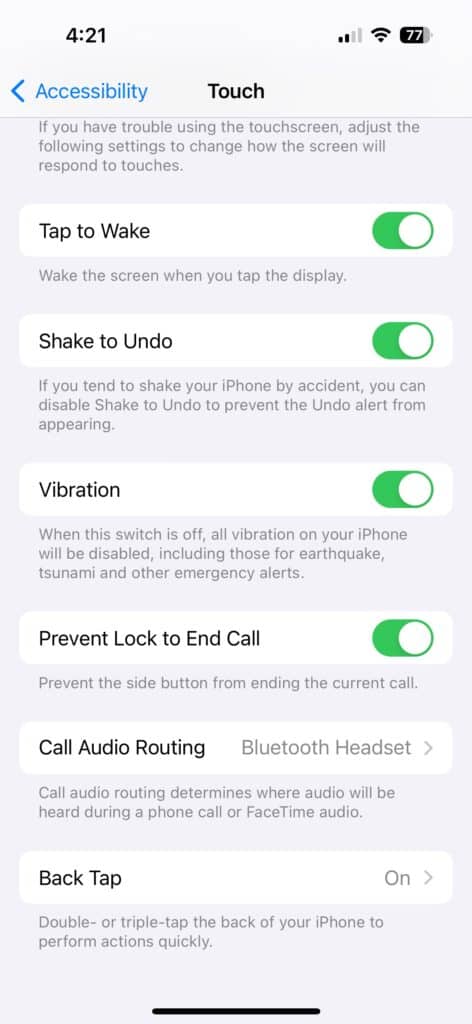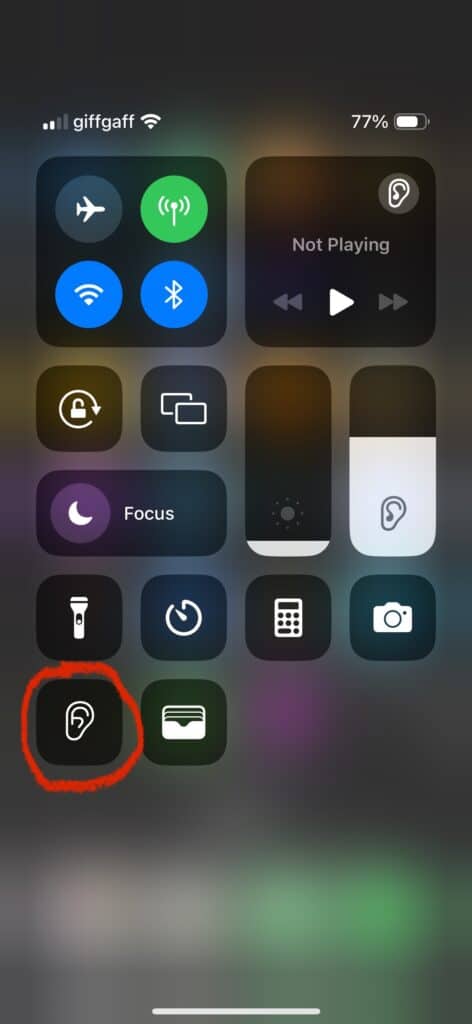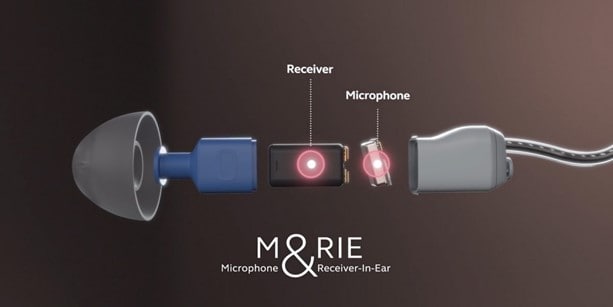Intent 1 Tested! (West Yorkshire)
Oticon say this about their Intent hearing aids:
Sensor driven BrainHearing technology uses your movements, the environment, and the conversation around you to recognise what you want and need to listen to, adapting seamlessly to deliver truly personalised support. Letting you stay focused on the moments that matter.
With the introduction of our new premium hearing aid Oticon Intent, we incorporate information from head and body movement, conversation activity and the acoustic environment into the world’s first 4D Sensor technology.
Really? Are they any good?
Oticon Intent rechargeable aids are slightly smaller than the Real rechargeables. They have changed the shape. The aids have an extension above the ears, so that the top microphones are pointing forwards.
The aids sat comfortably behind my ears. Their width at the top meant that there was a tendency for the aids to make contact with the arms of one of my pairs of spectacles, causing a slight rustling noise. My other glasses weren’t affected. Fortunately, Intent aids have excellent handling noise suppression which minimises interference from this source. I soon got used to wearing the aids and forgot that I was wearing them.
Charger and Charging
The charger is compact and with no lid. Power to the charger is supplied by a USB C PSU with a captive lead.
The aids are not powered by induction. They have contacts. This enables them to charge up relatively quickly.
Inserting and removing the aids into the charger is easy enough. The absence of a lid means that the lights on the aids are exposed. The lights are not particularly bright, but they might be a nuisance on a bedside table at night.
Ease of use
Full control of the aids is possible using the Oticon Companion app on a smartphone. It is easy to use and has a comprehensive set of functions, including program and volume change, a graphic equaliser, find my hearing aids, mute, speech booster and battery level.
Volume and program changes can be made using the buttons on the aids. The buttons are of the single push type, with right for up and left for down. I prefer this type of arrangement to up/down rocker buttons, which I find fiddly to use.
Notification of changes is made is by a series of beeps. The volume change beeps make a different sound to indicate the central position.
Program identification is made by remembering how many beeps are associated with each program, which can be confusing. Instead of beeps, Widex aids have a female voice announcing the name of each program
Programs
The General program worked well. I used it most of the time. I also used the MyMusic program. Other programs are available including Speech in Noise, Lecture and Comfort.
Sound Quality
The sound of the Intent aids is excellent. Sounds are natural and clear. Speech sounds natural, and other sounds such as cutlery chinking on a plate, or a toilet flushing, are as expected. Sounds such as a robin singing are bright and clear.
Speech remained clear in noisy environments, such as a busy supermarket or a restaurant.
The sound of my own voice was natural.
I felt that the Intent hearing aids supported my hearing in all different environments. They just sat there behind my ears and did their job well. I quickly forgot that I was wearing them.
In the open, the sound of wind on the aids is well supressed. I could hear the Wind Stabiliser cutting in and out with each gust, but it isn’t an issue.
The Feedback Manager is very effective. There was no feedback at all in normal listening situations.
Listening to music
The sound of music with the Intents set to their General program was good. Set to the MyMusic program it sounded better, but with a slight smearing of the treble when listening using hi-fi speakers. I prefer the sound of the MyMusic program with the Feedback manager turned off, which improves the clarity in the upper frequencies. With this setting the aids have a tendency to feed back, but it is minimal. Feedback might be an issue if your audiological prescription requires a lot of gain.
In the MyMusic program, the default setting of the Feedback Manager is Low. There is greater clarity in the treble if the Feedback Manager is turned off:
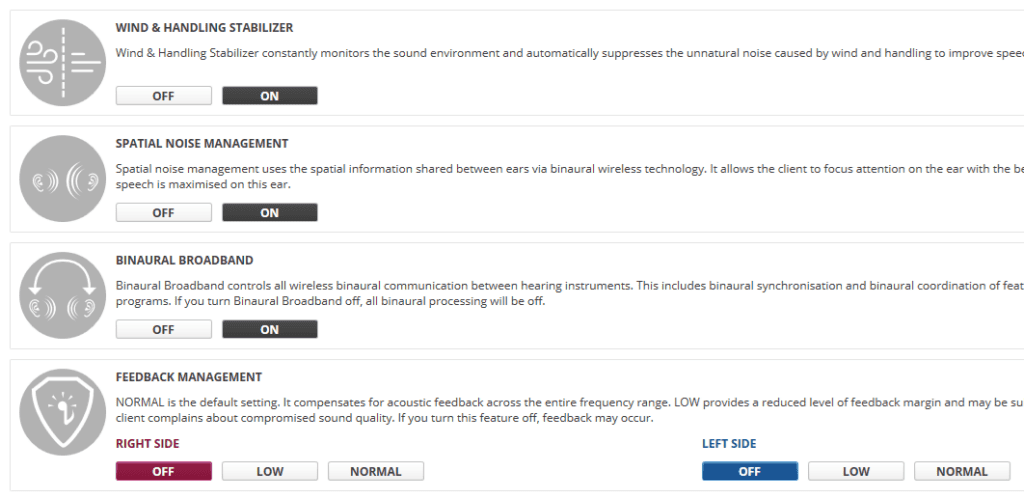
Streaming
Intents will stream from iPhones and Android phones. I paired the aids with my Android phone. Pairing via the app was simple enough. There was a low level of background hiss when streaming.
Hands-free phone calls are possible. Calls can be answered by a double tap on your ear. The system worked well
The streaming feature was useful for taking calls, but I was particularly interested in how the aids would sound with streamed music.
I listened to several hi-resolution tracks using the Qobuz music streaming app. The sound of streamed music was very good. The mid-band was clear and detailed. Female vocals sounded excellent. The bottom end was lacking though. Most people would be very happy with the sound, but possibly not fans of AC/DC or Led Zeppelin.
LE Audio
Oticon Intent hearing aids have a feature called LE Audio, which is a streaming technology based on Bluetooth Low Energy radio. It is available on some recent Android phones. On my phone it is labelled as experimental.
I tried streaming some music tracks using LE Audio, but I couldn’t detect any improvement in the sound quality compared with tracks streamed using standard Bluetooth Low Energy.
LE Audio is included in the latest Windows 11 release, but few computers have Bluetooth adapters that can use it. The aids paired with my computer. It recognised that they were LE Audio capable devices, but it didn’t work.
The LE Audio specification includes a one-to many technology called Auracast. Several, or many, people wearing LE Audio equipped devices are able to receive audio from a single source. It is pencilled in to replace telecoil technology, but it will have other uses as well. For instance, people wearing LE Audio devices will be able to hear railway station announcements made from a single Auracast source.
LE Audio technology isn’t being developed just for hearing aids. It is intended for use in earphones and earbuds that rely on battery power. Creative labs have released headphones that use it. An LE Audio capable Bluetooth dongle is included with the headphones and Creative have said that the dongle will be made available separately
TV Adapter
I connected the aids to a TV using the optical socket on a TV adapter 3. The sound quality was good. I tried listening in two ways, firstly with the TV speakers off and then with them on.
With the TV speakers off the sound and video synchronisation was good. It would be a useful feature if you wanted to watch TV by yourself without disturbing others.
With the TV speakers on, the two sound sources were slightly out of sync. There was an echo effect that I couldn’t entirely eliminate. I found that the best setting was to have the TV box quieter than the TV speakers
Conclusion
I never cease to be amazed by the capabilities of modern hearing aids and Oticon Intent 1 rechargeables are no exception. They are excellent hearing aids. Their performance is at least as good as other brands in this sector of the market and the inclusion of LE Audio makes them futureproof. The longer I wore them, the more I liked them.
FHJ: Oticon Opn 1, Widex Beyond 440, Phonak P30 and L90R. 18/07/2024
The Oticon Intent 1 Re-chargeable hearing aids were provided for evaluation by Mr Robert Donnan, of RJD Hearing Care, Cleckheaton
